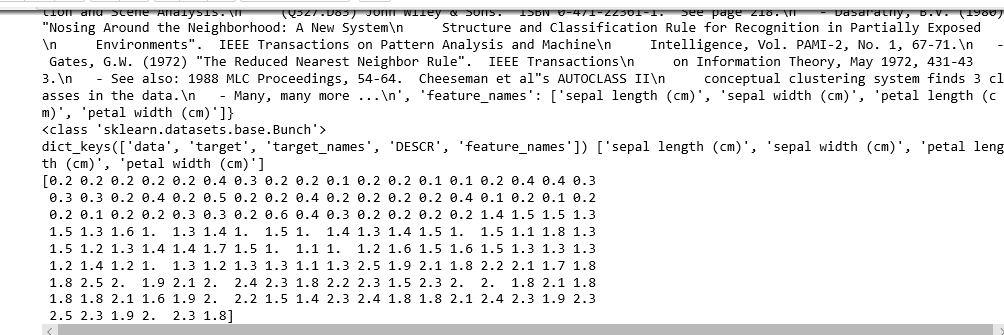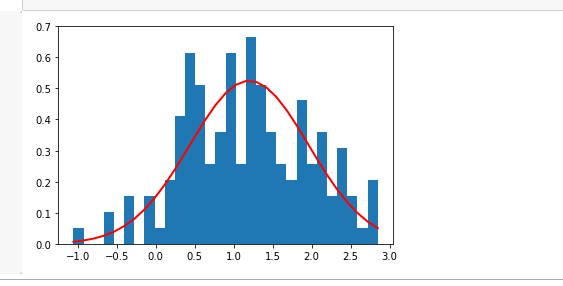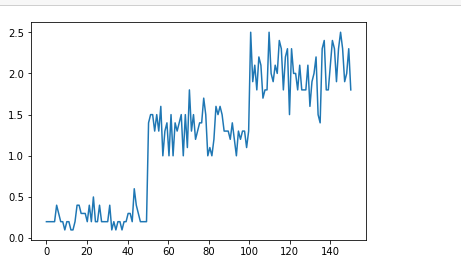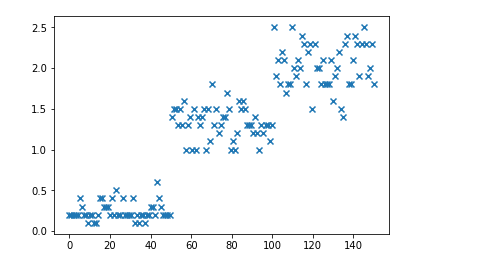#计算鸢尾花花瓣长度的最大值,平均值,中值,均方差。
#用np.random.normal()产生一个正态分布的随机数组,并显示出来。
#np.random.randn()产生一个正态分布的随机数组,并显示出来。
#显示鸢尾花花瓣长度的正态分布图,曲线图,散点图。
# 导包 import numpy as np # 从sklearn包自带的数据集中读出鸢尾花数据集data from sklearn.datasets import load_iris data = load_iris() print(data) print(type(data)) print(data.keys(),data.feature_names) iris = data.data petal_len = iris[:,3] print(petal_len)
运行结果:


#计算鸢尾花花瓣长度的最大值,平均值,中值,均方差。
print("最大值:",np.max(petal_len))
print("平均值:",np.mean(petal_len))
print("中值:",np.median(pental_len))
print("均方差:",np.std(pental_len))
运行结果:

#用np.random.normal()产生一个正态分布的随机数组,并显示出来。 data_rand=np.random.normal(1,5,10) #随机生成10个正态分布 print(data_rand)
运行结果:

#np.random.randn()产生一个正态分布的随机数组,并显示出来。 data_rand = np.random.randn(3,3) #随机生成三行三列的正态分布 print(data_rand)
运行结果:

#显示鸢尾花花瓣长度的正态分布图,曲线图,散点图。 #正态分布图 import matplotlib.pyplot as plt mu = np.mean(petal_len) sigma = np.std(petal_len) num = len(petal_len) rand_data = np.random.normal(mu,sigma,num) count, bins, ignored = plt.hist(rand_data, 30, normed=True) plt.plot(bins, 1/(sigma * np.sqrt(2 * np.pi)) *np.exp( - (bins - mu)**2 / (2 * sigma**2)), linewidth=2, color='r') plt.show()
运行结果:

#曲线图 x = np.linspace(0,len(petal_len),num=150) #将花瓣信息分成150个等距数组 y = petal_len plt.plot(x,y) plt.show()
运行结果:

#散点图 x = np.linspace(0,len(petal_len),num=150) #将花瓣信息分成150个等距数组 y = petal_len plt.scatter(x,y,marker = "x") plt.show()
运行结果:
